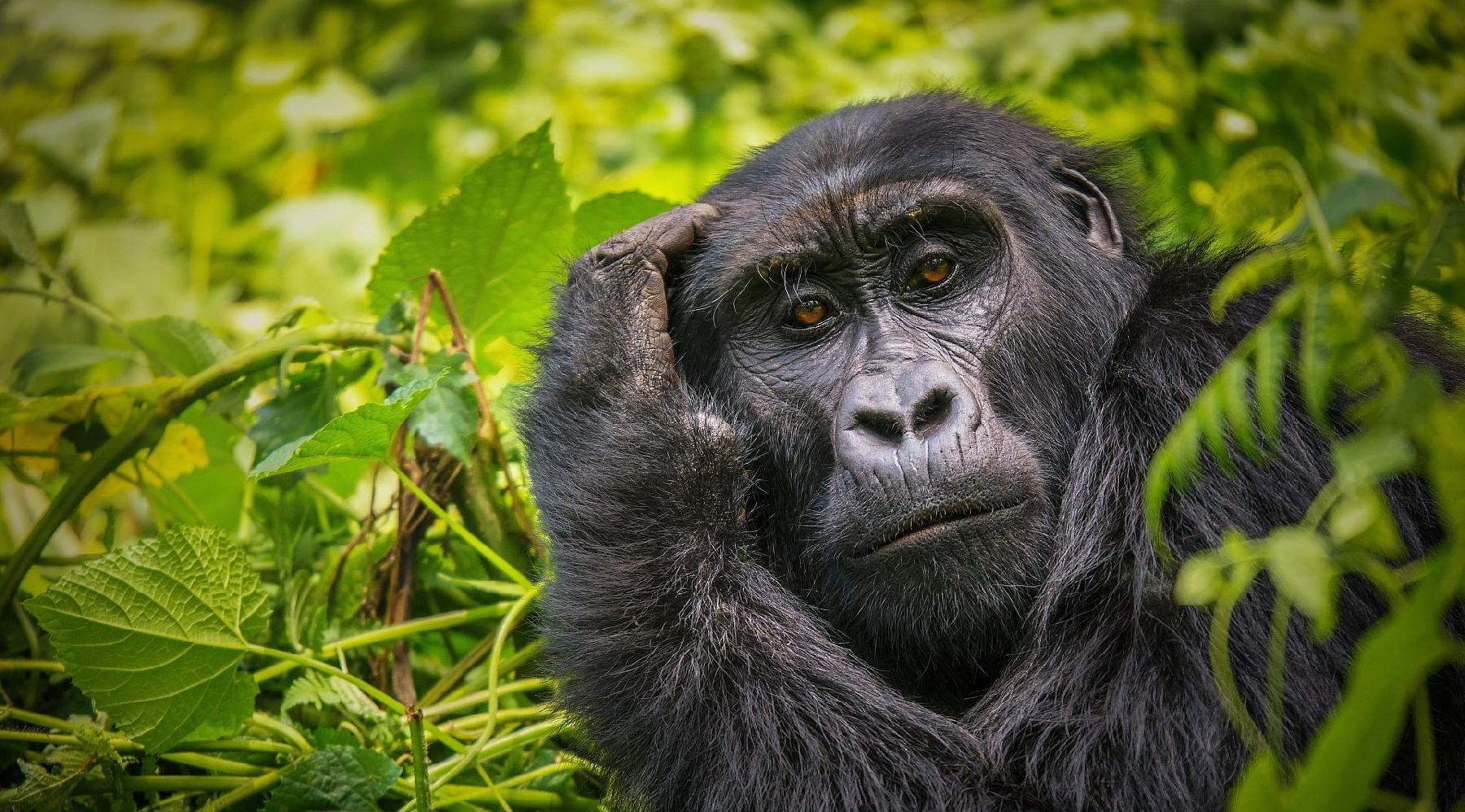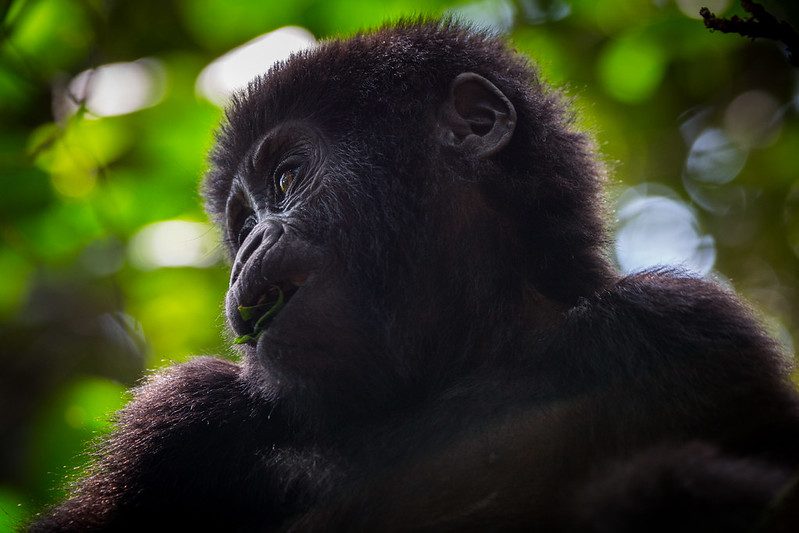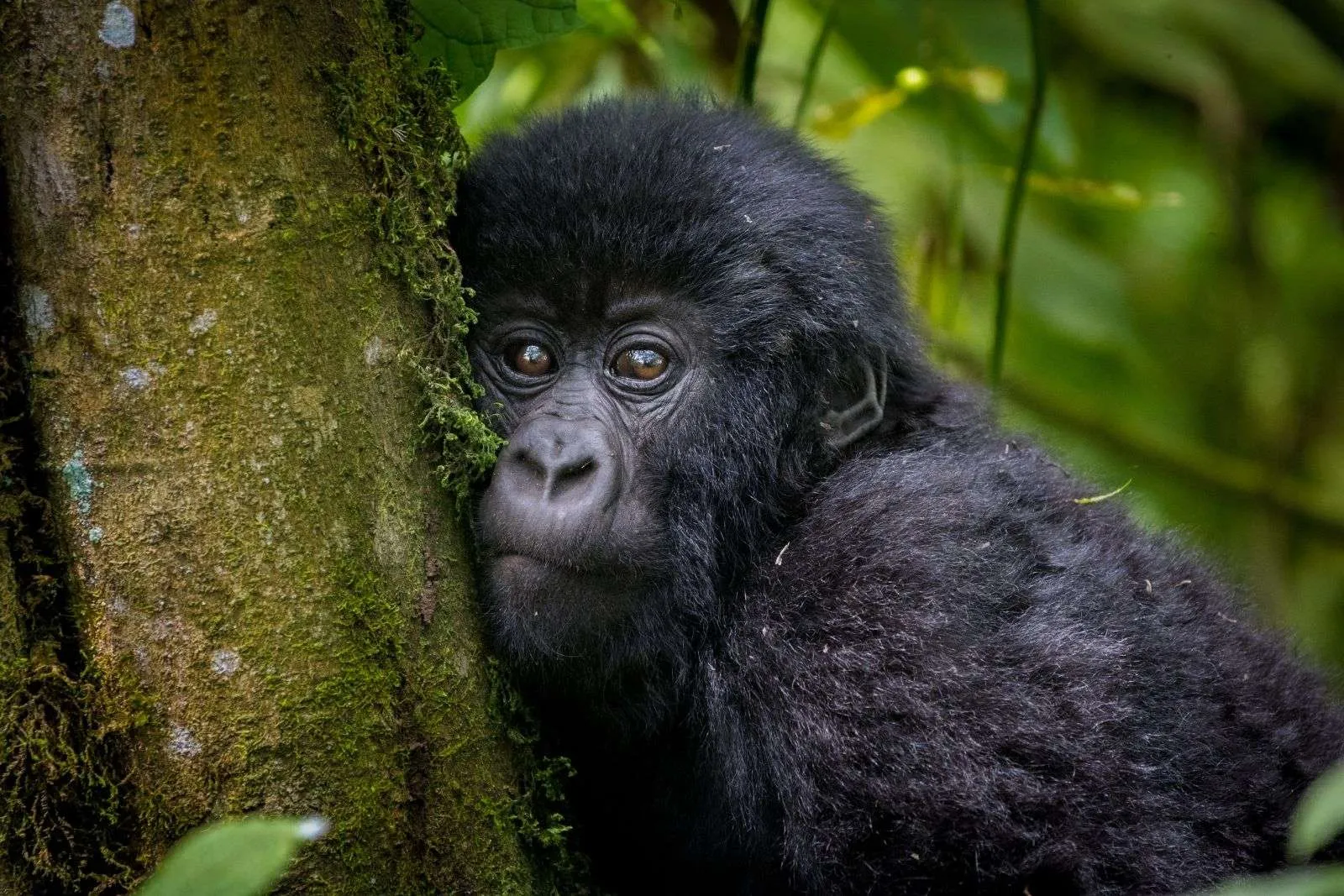How Many Days Do You Need for a Gorilla Safari in Uganda and Rwanda? How…

When is the Best Time to Visit Uganda?
When is the Best Time to Visit Uganda?
Uganda is a year-round destination for wildlife safaris; however, the best time to visit for optimal game viewing conditions is during one of two dry seasons: December to February and June to September. Temperatures remain steady month to month, typically sitting between 24°C and 30°C, but heavy showers can impact the accessibility of some trails and roads during the rainy periods.
Month-by-Month Guide to When is the Best Time to Visit Uganda?
January
Best for: cooling off in the misty mountains

January is the hottest month of the year in Uganda, with sunny days and temperatures ranging from 24ºC to 32ºC. This makes it a great time to escape the heat and head to the high altitudes of Bwindi Impenetrable National Park for hiking and trekking with wildlife in cooler conditions.
January is the middle of Uganda’s shorter dry season, and while rain is still possible in the forests, you are unlikely to experience regular downpours.
February
Best for: the driest trekking conditions and spotting wildlife
February is one of the top months to visit Uganda, as it is a prime time for gorilla trekking and one of the driest months of the year. Ordinarily, hiking in the dense forests can be wet, muddy, humid and occasionally uncomfortable, but the dry days of February make for optimal trekking conditions. Additionally, with reduced rainfall and decreased vegetation, spotting game is easier than ever. Expect clear skies, sunshine and average temperatures of 29ºC in Kampala and 25ºC in Bwindi Impenetrable Forest.
March
Best for: lush green landscapes and birdwatching
March marks the beginning of Uganda’s long rainy season, which lasts from March to May. During this time, long, heavy showers are to be expected every afternoon and evening, but as long as you have proper gear, a rainy season visit can be totally rewarding. Although heavy rains can impact the roads, the vegetation will be lush, and flowers will bloom across the country.
For bird enthusiasts, you are in for an adventure in March as the heavier rains prompt avian migration, so keep those binoculars handy. Queen Elizabeth National Park is an excellent place to spot a few of Uganda’s 1000 unique and colorful bird species, and the area will be noticeably quieter and crowd-free during the off-season. Migratory birds take flight in April and return to Uganda by early to mid-November.
April
Best for: quieter parks and good deals on low-season accommodation
April is the wettest month to visit Uganda, but savvy travelers see it as an opportunity to capitalize on affordable accommodation and crowd-free national parks.
For those up for an adventure, gorilla permits to trek in Bwindi Impenetrable National Park will be easier to book in April with fewer other travelers to compete with. Although gorilla trekking will come with some weather-related challenges, proper rain gear is a necessity, the rainy days typically have gorillas congregating in the warmth of the lower altitudes, so while the routes are bound to be muddy, getting to the gorillas will take much less time.
May
Best for: fewer crowds and more intimate wildlife encounters
May is at the end of the long rainy season, so days will be warm and wet, with showers tapering off toward the end of the month. Heavy downpours will be frequent in Bwindi Impenetrable National Park, but the gorillas will still be visible at lower altitudes before they head back up into the cooler mountains in June.
Lodging is readily available in May, and prices are usually significantly lower than during peak season. Plus, wildlife permits are reduced this month as crowd sizes thin, so you could find yourself observing a family of gorillas with as few as 2 or 3 other trekkers.
June
Best for: Peak Season excitement
The rains let up in June, leaving the landscape gorgeously green with blue skies and warm temperatures averaging around 27ºC. Toward the end of the month, vegetation starts to thin, increasing your chances of spotting four of the Big 5 game animals through the country’s parks.
Since June is the first month of Uganda’s peak season, lodges and activities will be open and the area will be filled with excitement. It is recommended to book accommodation early and secure your gorilla permit as soon as possible, though, since they tend to sell out quickly.
July
Best for: Ideal weather conditions for doing it all
July is a peak season in Uganda and with good reason. Daytime temperatures sit at a pleasant 25ºC, occasionally dropping to 13ºC in Bwindi Impenetrable National Park. The dry climate and comfortable conditions open the door for a myriad of outdoor activities, from gorilla trekking to safaris to boat cruises on the Nile.
Game drives will have incredible sightings as wildlife congregate around watering holes and are easy to spot. By July, gorillas have made the climb back up into the misty mountains, but the lack of rainfall makes the longer treks much more manageable.
August
Best for: leopard sightings and wildlife photography
Uganda’s landscape is sparse in August, the driest month of the year. But while vegetation is at its lowest, visibility is at an all-time high. August is a prime month for game drives, and you will have a clear view of all the animals that may cross your path, including lions, leopards, zebras and buffalo.
With unobstructed paths, you may even get the chance to spot one of the most hard-to-find members of the animal kingdom—the leopard.
Nights can get chilly in August with temperatures that can get down 14ºC, so pack layers
September
Best for: Chimpanzee tracking in the forest
September ushers in Uganda’s second rainy season of the year; the first half still makes for excellent game-spotting conditions. Typically, the rains won’t arrive in the highlands until later in the month, so early September is a popular time for chimpanzee trekking in the Kalinzu Forest.
The Kalinzu Forest is home to over 300 chimpanzees, and a hike to see them in their natural habitat is a popular dry-season activity, as trails will be in the best condition.
October
Best for: Last-minute travel deals
October marks the start of Uganda’s “short” rainy season. Although the rains aren’t as heavy as the “long” ones from March through May, they are more frequent, and you should be prepared for the occasional heavy showers throughout the day and muddy conditions.
Because of the unpredictability of the rains, October isn’t a very popular month to travel to Uganda, making it a great time to score a last-minute gorilla permit. If you are an undecided traveler. Accommodations often offer specials for October and prices will be more reasonable.
Don’t let the rains scare you off, though; it typically only rains for a few hours a day, and you will still have perfect pockets of sunshine and blue sky.
November
Best for: Shoulder season quietness
November is shoulder season in Uganda, and you are likely to get a mix of both rainy and dry days. This is a good time to catch sight of the migratory birds returning, and photographers will be treated to dramatic skies and landscapes as late afternoon thunderstorms roll through the emerald green countryside.
In November temperatures can vary, with some days reaching 28ºC and others dipping to 18ºC, though less than half of these days in November are rainy.
November is the last month to enjoy the off-season prices on accommodation and tours before the second peak season arrives.
December
Best for: adventure activities in Jinja and relaxing by the Nile

December ushers in another dry season, and weather becomes more predictable as rainfall tapers off. This makes it a great month to soak up the sunny days in Jinja. Sitting on the shores of Lake Victoria, the town of Jinja is home to the source of the Nile River. Often called the “adrenaline capital of East Africa,” it offers plenty of water activities, from rafting and kayaking to tubing and sunset cruising.
Lake Victoria is one of the most ecologically diverse places on the continent, so keep your camera ready for when you spot Nile crocodiles and hippos.
When to Visit
The best time to visit Uganda for an encounter with the elusive mountain gorillas is between December and February or June and August. During these dry seasons, the skies are blue, days are clear, and hiking trails are relatively mud-free.
Although these incredible animals can be spotted year-round, conquering the Bwindi Impenetrable Forest during the rainy season can be slightly more challenging. Gorilla trekking can involve several hours of walking up and down hills, and during the wet months, trails will be muddy and slippery and thick tropical foliage can present some roadblocks. The off-season does have its benefits, though, and with fewer crowds, you might find yourself meeting a family of gorillas with only a handful of other trekkers.



